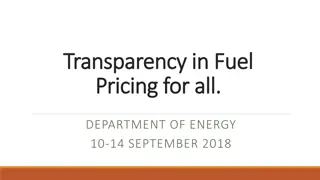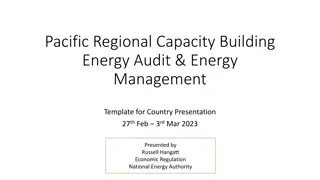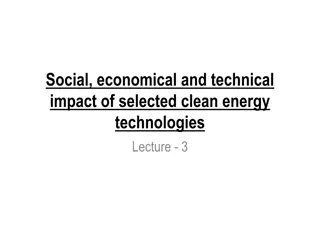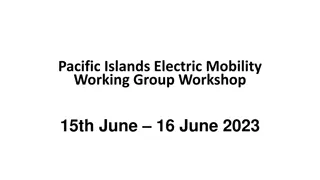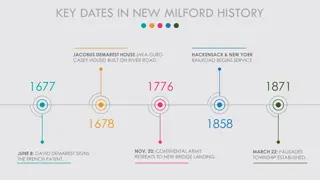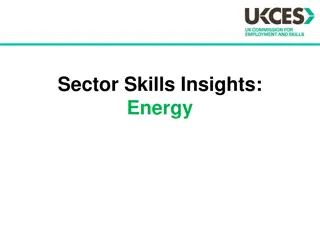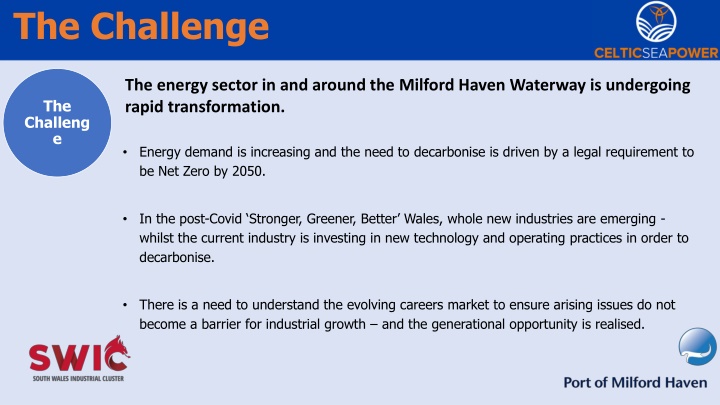
Transforming Energy Sector in Milford Haven: Challenges & Opportunities
The energy sector around Milford Haven Waterway is rapidly transforming to meet increasing energy demand while also working towards decarbonization. New industries are emerging post-Covid, creating a need to understand evolving careers for sustainable growth. Research highlights key actions for industry collaboration, workforce development, and engaging education providers.
Download Presentation

Please find below an Image/Link to download the presentation.
The content on the website is provided AS IS for your information and personal use only. It may not be sold, licensed, or shared on other websites without obtaining consent from the author. If you encounter any issues during the download, it is possible that the publisher has removed the file from their server.
You are allowed to download the files provided on this website for personal or commercial use, subject to the condition that they are used lawfully. All files are the property of their respective owners.
The content on the website is provided AS IS for your information and personal use only. It may not be sold, licensed, or shared on other websites without obtaining consent from the author.
E N D
Presentation Transcript
The Challenge The energy sector in and around the Milford Haven Waterway is undergoing rapid transformation. The Challeng e Energy demand is increasing and the need to decarbonise is driven by a legal requirement to be Net Zero by 2050. In the post-Covid Stronger, Greener, Better Wales, whole new industries are emerging - whilst the current industry is investing in new technology and operating practices in order to decarbonise. There is a need to understand the evolving careers market to ensure arising issues do not become a barrier for industrial growth and the generational opportunity is realised.
A Call to Action Call to Arms This research has identified 6 key actions to resolve gaps. The Haven Waterway Energy sector must work together to: 1. Better define cross-sector, fit-for-purpose training opportunities and defined career roadmaps. 2. Take steps to retain, and attract, the over 50 s in order to develop effective knowledge exchange. Particularly with respect to essential soft skills. 3. Ensure that there is long-term application of successful pilots which: Embed the energy opportunity within schools Provide meaningful work experience Extend access to work tools to adult learners
A Call to Action Call to Arms This research has identified 6 key actions to resolve gaps. The Haven Waterway Energy sector must work together to: 4. Communicate with a clear sense of place that appeals to the influence of family and lifelong learning approaches. 5. Better define the diverse range of opportunity - across all elements of the energy sector. Utilise workforce modelling (based on commonly understood career pathways and skills families) to articulate: The scale of need. The timing required. 6. Establish long-term collaboration with education and training providers. This needs to be consistent and regular so that they are fully engaged in the scale of demand.
Study Methodologies The research underpinning these findings were conducted by Celtic Sea Power through established methods: Method s Thorough literature review Comprehensive employer-demand questionnaire, In-depth stakeholder meetings Survey of Waterway households with learners enrolled in local training programs
Industry Focus 1. Identify industry job/skill profiles and anticipated gaps. 2. Utilize existing industrial energy sector transformatio n timelines to determine job/skill needs and their timing. 6. Assess activities in different regions and industries for potential application in the Waterway. Indust ry 5. Identify Milford Haven Waterway energy sector's efforts to attract new employees. 3. Identify and quantify non-STEM services/skills needed by the industry. 4. Outline regional energy industry- based scholarships/a pprenticeships .
People Focus 1. Identify under- represented groups in the local energy sector and assess potential reasons. 2. Assess Pembrokeshire residents' understanding of career opportunities. 4. Assess the potential establishment of a young minds think tank to help engagement. People 3. Assess teachers and careers advisers' understanding of industry opportunities and needs.
Tools Focus 1. Identify what careers engagement tools exist. Through formal education and the public domain. How effective they are in reaching different audiences? Tools 2. Identify other communication tools and strategies that could be deployed for careers engagement. Assess impact in reaching different audiences 3. Assess the formal education pathway for the Haven Waterway Energy Sector
Conclusion The Haven Waterway Energy sector must work together to: Conclusion 1. Better define cross-sector, fit-for-purpose training opportunities and defined career roadmaps. 2. Take steps to retain, and attract, the over 50 s in order to develop effective knowledge exchange. Particularly with respect to essential soft skills. 3. Ensure that there is long-term application of successful pilots 4. Communicate with a clear sense of place - appealing to the influence of family 5. Better define the diverse range of opportunity: The scale of need. The timing required. 6. Establish long-term collaboration with education and training providers.
Example Tool Kits 50 over 50 Tool Kits Your PORT in YOUR School Energy Works










